Table of Contents
Persian clothing is a captivating blend of vivid colors and intricate patterns. Each garment is a work of art that tells a story of ancient traditions and artistic skill. The Persians had an incredible eye for beauty, and it is evident in their clothing.
The fabrics used in Persian garments are a delight to the senses. They feature a stunning array of rich hues and earthy tones that come together in perfect harmony. Royal purples, deep blues, and fiery oranges dominate the color palette, creating an aura of majesty and elegance. To add a touch of opulence, gold, and silver embellishments are meticulously woven into the fabric, adding a sense of enchantment to every piece.
Persian clothing is a testament to the craftsmanship and artistic vision of an ancient civilization. It invites us to step into a world where colors come alive, and patterns whisper stories of the past.
Traditional Persian Clothing: A Colorful Palette
Step into the enchanting realm of Traditional Persian Clothing. Like brushstrokes on a canvas, the colors of these garments come alive, reminiscent of the vivid palette found in Persian miniature paintings. However, it’s worth noting that the colors depicted in these artworks may not always align perfectly with the dyes used in reality. Nonetheless, the significance of color in Persian clothing cannot be overstated.
During the Achaemenid period, Persian clothing evolved into a sophisticated art form, where fabric and color held paramount importance. Factors such as social status, prominence, regional climate, and even the changing seasons influenced the diverse forms that Persian attire would take. Yet, beyond functionality, the guiding principle behind Persian clothing was its aesthetic value. Though seldom worn in urban areas today, the legacy of Ancient Persian Clothing endures through the preserved accounts in texts and the vivid strokes of historical paintings.
Traditional Persian Clothing of Different Regions
Discover the enchanting world of traditional Iranian clothing, where a variety of tribes showcase a burst of colors and fascinating headwear. From vibrant shades like crimson and gold, the garments come alive with a vibrant palette that reflects Iran’s rich cultural tapestry. Delicate patterns and embroidery adorn the flowing fabrics, showcasing the expert craftsmanship passed down through generations.
Alongside the colorful attire, unique headdresses featuring feathers, beads, and ribbons add an intriguing touch, capturing the spirit of resilience and creativity. Immerse yourself in the captivating realm of traditional Iranian clothing and experience the captivating blend of colors and distinctive headwear that define its charm.
Bakhtiari Clothing of Iran
The clothing worn by the nomadic Bakhtiari tribe in Iran is a striking display of vibrant colors and cultural pride. These garments are not just beautiful; they are also designed to withstand the challenging weather conditions that the tribe encounters during their migrations. Women often wear layered skirts in a variety of colors, paired with matching vests. Men, on the other hand, don tunics, broad pants with ankle buttons, and wool skull caps.
In addition to their visual appeal, the Bakhtiari clothing holds symbolic significance within their community. It is a reflection of social status and conveys information about an individual’s class, education, travel, and pilgrimage. The intricate hand-stitched patterns and decorations found on the lengthy head coverings further enhance the richness and uniqueness of their traditional attire. The Bakhtiari people take great pride in their clothing, as it not only showcases their heritage but also serves as a practical and meaningful part of their nomadic lifestyle.
Baloch Clothing of Iran
Baloch clothing, a treasured tradition of the ancient Iranian clan, unveils a world of captivating allure. Within its fabric lies a delicate and intricate artistry that transcends time. The essence of Baloch stitching lies in its geometric patterns, meticulously crafted by skillfully combining lines and forms. These designs encompass a myriad of themes, from cosmic motifs to plant-inspired elements and animal representations. Each thread weaves a story, creating a symphony of visual poetry that resonates with the soul.
In the scorching environment, simplicity blends harmoniously with elegance in the attire of Baloch men and women. The male ensemble often comprises a long shirt paired with loose-fitting pants, allowing for comfort without compromising style. Meanwhile, Baloch women’s clothing is a testament to exquisite craftsmanship. Adorned with intricate embroidery, the artistry graces the chest, sleeves, and hemlines of their pants. Completing the allure are the historic and distinctive jewelry ornaments, and treasured accents that hold significant value for Baloch ladies. Together, the garments and jewelry embody the essence of Baloch fashion, a perfect harmony of practicality and timeless charm.
Qashqai Clothing of Iran
The Qashqai, a nomadic tribe with Turkic, Kurdish, and Arabic origins, boast a captivating traditional attire. Women don voluminous, multilayered skirts in vibrant colors, paired with long head scarves elegantly pinned under the chin. These scarves allow loose strands of hair to frame their faces, adding a touch of grace to their appearance.
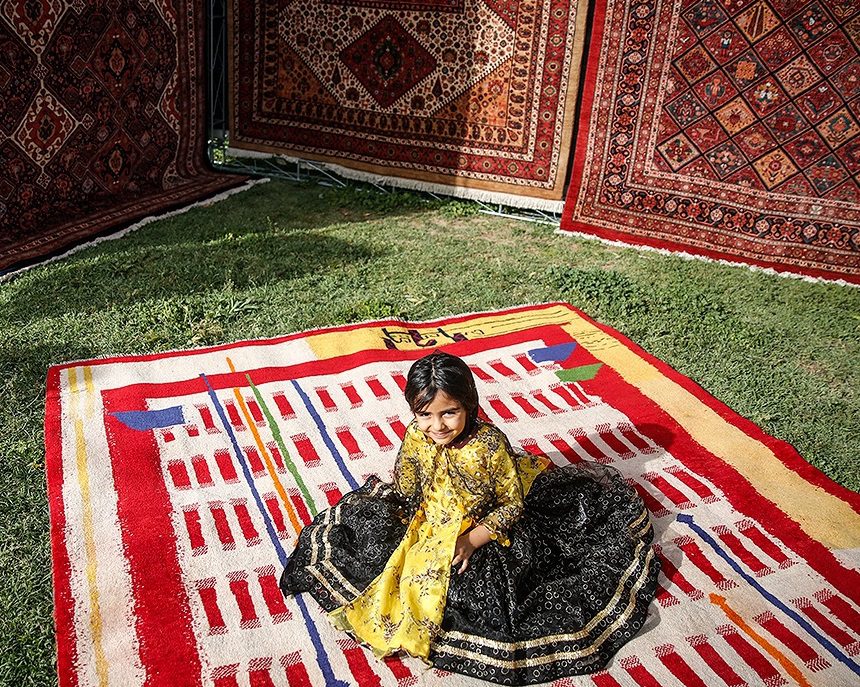
Qashqai men don collarless white shirts and long cloaks secured around the middle with a cummerbund. They adorn unique round dogushi hats, made from sheep’s wool felt, which are exclusive to the tribe. This distinct ensemble reflects their nomadic heritage and cultural identity.
The Qashqai tribe’s traditional attire exhibits nomadic elegance through vibrant skirts, graceful headscarves, and unique hats, preserving their cultural heritage in style.
Turkmen Clothing of Iran
The Turkmen tribe welcomes curious travelers to witness their unique attire, characterized by a blend of silk and tradition. Silk has long been the prized fabric in Turkmen clothing, complemented by leather, cotton, linen, and more. Men’s apparel consists of tunics, pants, shoes, and hats, showcasing their distinct styles.
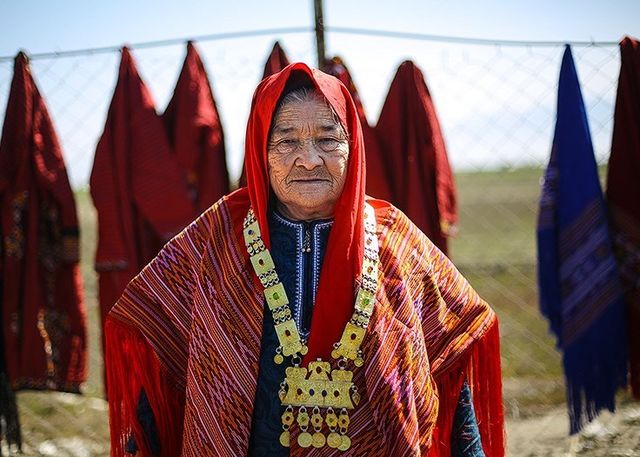
A notable feature of Turkmen clothing is the long robe or tunic known as a don, often embellished with embroidered ribbons. The iconic qizil don, a long red robe, is a standout element. Men wear a collarless shirt called a quink beneath the don, featuring embroidered sleeves. Loose-fitting balaq pants with tassel-like decorations complete their attire, while a variety of hats, including the Tlepak, add to their unique fashion.
Turkmen traditional attire weaves together silk, craftsmanship, and cultural heritage, providing a captivating glimpse into their vibrant traditions and rich cultural tapestry.
Kurdish Clothing of Iran
Kurdistan, the westernmost region of Iran, is renowned for its vibrant traditional clothing. Featuring colorful patterns, the attire typically includes a long dress or gown adorned with vests or jackets. Brightly colored pants, decorative belts, and embellished shoes complete the ensemble. Accessories, especially jewelry, are highly cherished by Kurdish women of all ages, showcasing their love for adornments.
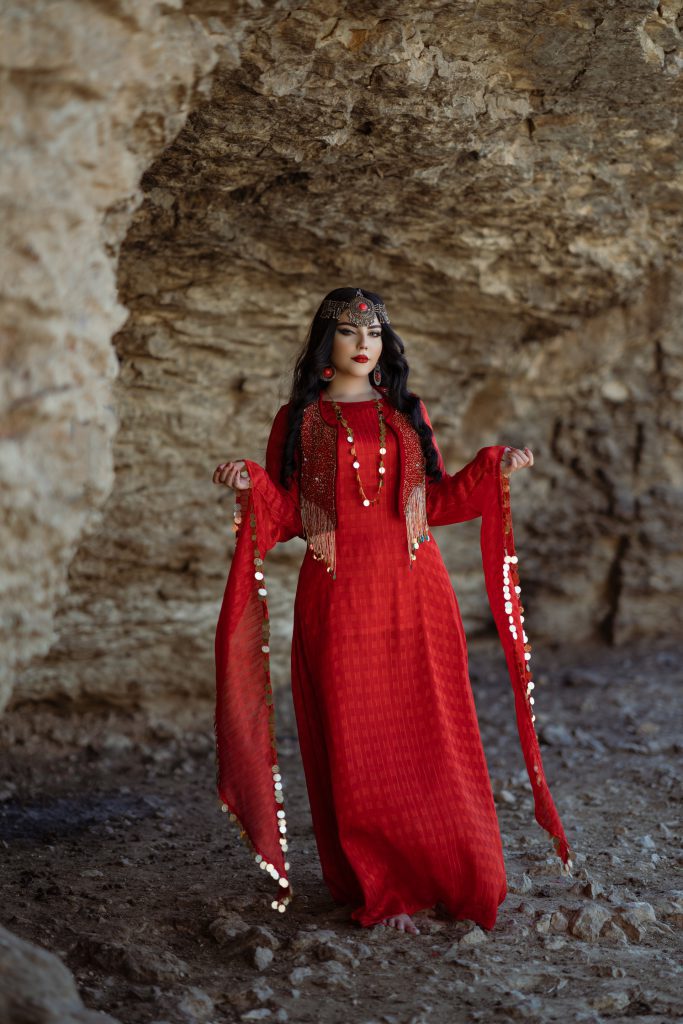
In Kurdish tribes, older women often wear valuable jewelry received as a dowry, symbolizing their grandeur and dignity. Younger women, in contrast, embrace brightly colored traditional robes and garments. Men opt for simple shirts layered with vests or coats, paired with baggy pants fastened with broad belts. Kurdish people display their diverse attire not only in everyday life but also during celebrations, rituals, and weddings, adding richness to their cultural traditions.
Kurdish traditional attire in Kurdistan presents a vibrant kaleidoscope of colors, reflecting their unique identity and celebrating cultural heritage.
Gilaki Clothing of Iran
Originating from the picturesque northern region of Gilan, the Gilak people have a deep-rooted connection to the land, engaging in farming and livestock raising amidst the breathtaking Alborz Mountain range and surrounding plains. When it comes to traditional attire, Gilaki women don a captivating ensemble that showcases their distinctive style. Their dress typically consists of long pleated shirts, elegantly layered with black velvet vests adorned with vibrant embroidery. Instead of the wide-legged trousers commonly seen in Iranian traditional clothing, Gilaki women opt for floor-sweeping skirts adorned with lively horizontal stripes, adding a touch of playful color and movement to their outfits.
The men’s wardrobe among the Gilak people embraces a more subdued color palette. A black-and-white theme dominates their attire, exuding a sense of timeless elegance. However, the men’s outfits are not without a lively touch. A vibrant splash of color is introduced through their choice of socks or the wide cotton waistband, offering a delightful contrast to the overall monochrome aesthetic. This harmonious blend of simplicity and a pop of color exemplifies the Gilaki people’s appreciation for balance and subtlety in their traditional dress. With their enduring charm and unique fashion choices, Gilaki traditional attire pays tribute to the cultural heritage and natural beauty of the Gilan region.
Mazanderani Clothing of Iran
The Mazanderani people, native to the Caspian region of Iran, have a distinctive style of dressing that exudes modest elegance. In contrast to other tribes known for their vibrant clothing choices, Mazanderani women opt for a more understated look. They don black trousers paired with short, puffy skirts and a waist-length tunic-style top. The tops are often adorned with exquisite traditional embroidery, adding a touch of artistry. However, it is their headscarves that truly stand out as the most ornamental pieces of their attire, featuring intricate beadwork and charming tassels.
Men of the Mazanderani tribe also embrace a simple yet refined approach to fashion. Their ensembles consist of a plain vest layered over white cotton shirts, which are neatly tucked into hunting trousers. Completing the look are dark socks pulled up to just below the knee. This straightforward and practical attire reflects the Mazanderani people’s appreciation for functionality while still maintaining an air of elegance. Whether it’s the modest yet stylish women’s clothing or the understated sophistication of the men’s attire, Mazanderani traditional clothing pays homage to their cultural heritage with a subtle grace.
Luri Clothing of Iran
When it comes to traditional attire, Lur men and women showcase contrasting styles that captivate the eye. Lur men, known for their preference for neutral colors, don black felt hats and drape white shaals around their waists, exuding an air of understated elegance. In contrast, Lur women gravitate towards vibrant hues, injecting a burst of color into their ensembles. The hallmark of Lur women’s attire lies in the distinctive stripes adorning the cuffs of their trousers, adding a playful touch to their overall look. A vest worn over a long dress further highlights the sleeves, while the headscarf is skillfully wrapped around the head, neck, and shoulders, with a long end trailing down the back.
What truly sets Lur traditional clothing apart is the intricate attention to detail. The dresses worn by Lur women are adorned with highly detailed beading, showcasing the meticulous craftsmanship of the region. Moreover, coins and beads delicately dangle from the headscarves, creating a mesmerizing display of ornamentation. The combination of vibrant colors, eye-catching stripes, and embellishments make Lur traditional attire truly captivating. It is through these exquisite details that the cultural heritage and artistic flair of the Lur people come to life, making their clothing a true feast for the eyes.
Khorasan Clothing of Iran
Khorasan, the largest province in Iran, is known for its saffron, barberry, and unique traditional clothing. The province’s vastness and diverse ethnic groups contribute to a variety of local attire, including Kurdish, Turkmen, and Kurmanj tribes. These traditional Iranian clothing styles reflect the beauty of nature and showcase a range of vibrant colors and designs.
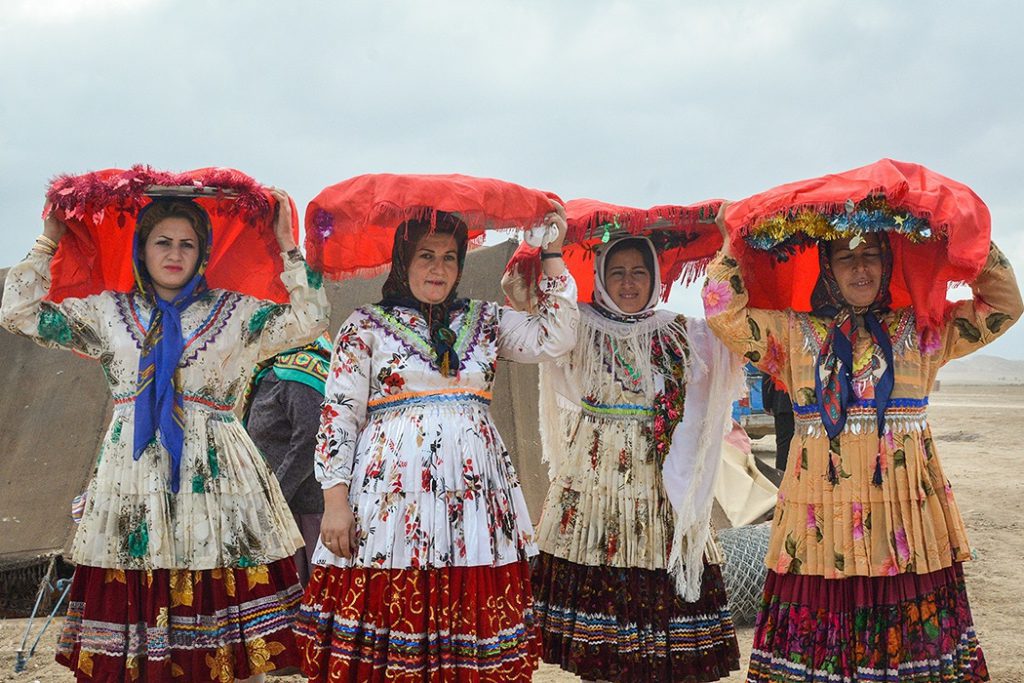
In North Khorasan, Kermanj women wear five pieces of clothing, while Kurmanj men embrace cheerful colors inspired by nature. Though traditional attire may be less common in the province’s cities, certain households still value preserving their cultural clothing. The Turkmen of Maneh and Samolghan proudly maintain their traditional clothing, utilizing fabrics like kolte, chelpi, silk, and wool.
The traditional attire of Khorasan province is a celebration of diversity, blending vibrant colors, cultural heritage, and the unique styles of various ethnic groups.
Ilam Clothing of Iran
Ilam women’s traditional clothing centers around the captivating golvani. This unique attire reflects the influence of the Achaemenid era and showcases the region’s rich cultural heritage. The word “golvani” in the local language refers to a silk scarf adorned with beautiful traditional patterns. It serves as a fashion statement and a symbol of identity for women in Ilam.
Paragraph 2: It’s interesting to note that even young girls embrace the golvani by wearing smaller versions of it as scarves. These miniature golvani scarves have become a cherished symbol of Lorestan, a region known for its cultural significance. The popularity of this type of Persian clothing dates back to ancient times, particularly during the Medes and Achaemenid periods, adding an elegant and captivating touch to Ilam’s cultural tapestry. The golvani’s intricate designs and delicate silk fabric make it more than just an accessory—it tells a visual story of tradition and beauty.
Bandari Clothing of Iran
In Bandar Abbas and Qeshm Island, the southern part of Iran, women wear vibrant chadors, which are large colorful cloths that cover their hair and bodies. They also don niqâbs, two types of face coverings. One type creates the illusion of eyebrows and a moustache from afar, a clever trick to confuse invaders. The other is an embroidered rectangular covering that reveals only the eyes. These niqâbs have a centuries-old tradition and were originally worn to protect against the strong winds, sand, and sun in the region.
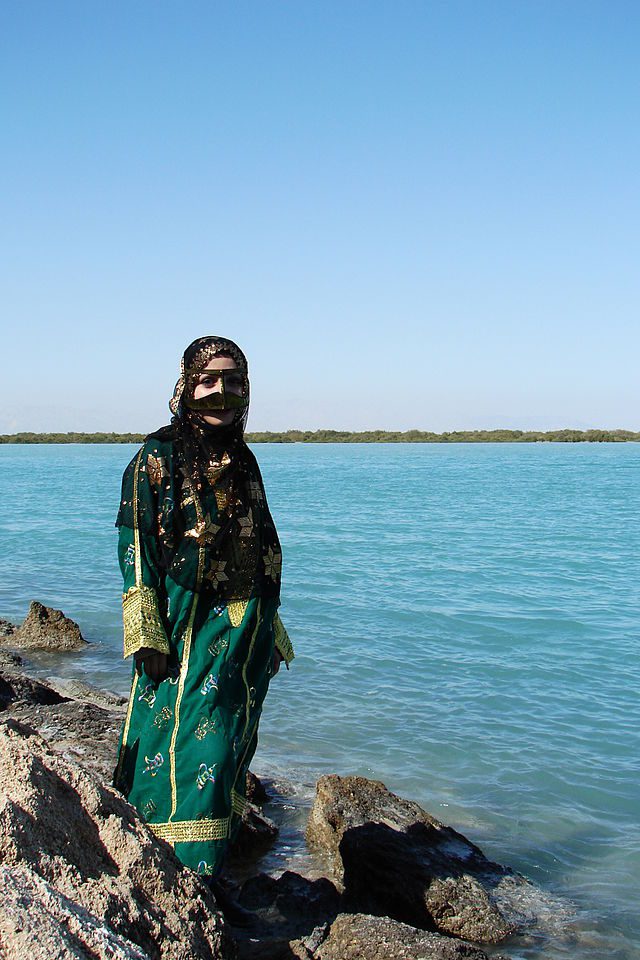
While many women no longer wear niqâbs today, they remain an integral part of the cultural heritage of Bandar Abbas and Qeshm. These face coverings were initially designed to shield the face from harsh elements—wind, sand, and intense sunlight. Over time, they became symbols of identity and tradition, representing the unique history and resilience of the women in these areas.
Modern Persian Clothing
In Iran, including bustling cities like Tehran, traditional clothing has given way to a more modern and diverse fashion scene. The younger generation embraces Western trends while incorporating traditional elements. Women opt for chic ensembles like tailored blazers with flowing scarves or intricately patterned dresses paired with modern accessories. Men sport tailored suits with traditional Iranian headwear. This fusion of traditional and contemporary styles has created a vibrant fashion subculture, blending Persian motifs and colors with global influences.
In short, modern Persian clothing showcases a captivating blend of tradition and contemporary style. Iranians in cities like Tehran confidently express their individuality through fashion, combining elements of their cultural heritage with the latest fashion trends. This dynamic fusion gives rise to a unique fashion subculture that pays homage to Iran’s rich tradition while embracing the global fashion landscape.
Modern Female Clothing in Iran
In Iran, women’s fashion has embraced a mix of traditional and contemporary elements. Pants, including jeans, are hugely popular among both women and men, offering comfort and versatility.
The key piece in women’s attire is the “manto” (long robe), which adds elegance and modesty to their look. Completing the ensemble is the scarf, available in two styles: the larger-sized “rosary” and the delicate “shal.” These scarf variations allow Iranian women to express their personal style while adhering to cultural norms, adding a touch of individuality to their outfits.
Modern Male Clothing in Iran
Modern male clothing in Iran strikes a balance between tradition and comfort, offering a unique blend of styles. Iranian men have embraced a more relaxed approach to their attire, opting for T-shirts and pants as their go-to outfit choice.
Gone are the days of rigidly adhering to traditional garments. Iranian men now embrace a fashion that combines simplicity and style. T-shirts, both plain and adorned with patterns, have become a staple in their wardrobes, paired effortlessly with comfortable pants.
This modern twist on male clothing reflects the desire of Iranian men to be both fashionable and comfortable. Whether it’s a casual day out or a special occasion, the fusion of T-shirts and pants allows for versatility, ensuring that Iranian men can effortlessly express their personal style while staying true to their cultural heritage.
Traditional Style in Modern Persian Clothing
Iranian designers have embraced a fascinating trend in the world of fashion, seamlessly blending tradition and modernity. One notable aspect is the revival of traditional patterns like Floral and Paisley (Bote Jeghe), which now adorn a range of modern clothing items such as scarves, mantos, handbags, and shoes. These patterns, characterized by vibrant colors inspired by nature, have gained immense popularity among young fashion enthusiasts.
This revival not only adds an elegant touch to modern Persian clothing but also pays homage to Iran’s rich cultural heritage. The incorporation of Floral and Paisley motifs signifies a strong connection between the past and present, showcasing the enduring charm of Iran’s traditions in a contemporary context. By infusing these traditional elements into their designs, Iranian designers have created a captivating fusion of old and new, capturing the attention and admiration of fashion-forward individuals worldwide.
Bote Jeghe: A Paisley Pattern
Bote Jeghe, the bent cypress pattern, holds a special place in Iran’s history and culture. It has been cherished for centuries as a symbol of humility and grace. This exquisite pattern adorns various handicrafts, including fabrics, carpets, pottery tiles, shawls, and textiles. Its delicate curves and intertwined motifs tell stories of Iran’s rich artistic heritage, captivating the hearts of all who behold its timeless elegance.
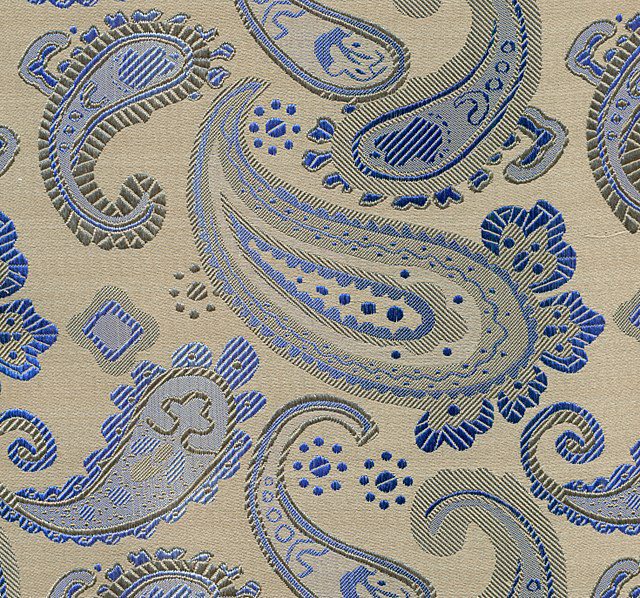
Bote Jeghe weaves its magic into a diverse range of handicrafts, embodying the artistry of Iranian culture. From carpets to kilims, pottery tiles to shawls, this cherished pattern adds a touch of sophistication to every creation. Whether in delicate weavings or intricate embroidery, Bote Jeghe stands as a testament to the skill and mastery of Iranian artisans. Its presence in cashmere garments, known as Termeh, further showcases its versatile nature. Bote Jeghe continues to enchant and inspire, leaving an indelible mark on the world of art.
Top Persian Clothing Brands
Iran is a country with a rich history and diverse culture, which is reflected in its clothing styles. Traditional garments in Iran vary across regions, with remote provinces proudly preserving centuries-old customs through vibrant colors and intricate designs. In urban areas, modern fashion trends have influenced attire, while the Islamic revolution in 1983 brought changes such as the mandatory hijab for women. Despite these transformations, Persian clothing continues to celebrate Iran’s heritage and cultural diversity, combining traditional craftsmanship with contemporary adaptations influenced by global fashion. Here are top Persian clothing brands:
Body Spinner
When Body Spinner commenced operations in 2007, its primary focus was on men’s clothing. However, as time progressed, the brand expanded its repertoire to include beautifully crafted women’s dresses. Today, Body Spinner has emerged as one of Iran’s most prominent clothing brands, boasting 42 active branches throughout the country. With a steadfast commitment to blending contemporary style and comfort while honoring Iran’s rich cultural heritage, Body Spinner has solidified its position as a leading fashion and textile business for over a decade.
As an up-and-coming fashion label, Body Spinner diligently keeps pace with the latest global and Iranian fashion trends. By offering a wide range of meticulously crafted garments, the brand ensures exceptional quality without compromising affordability. Whether you seek trendy and distinctive pieces or timeless ensembles that pay homage to tradition, Body Spinner caters to diverse fashion sensibilities. Experience the perfect fusion of fashion and heritage with Body Spinner, where each item is thoughtfully designed to reflect the brand’s dedication to style, comfort, and the vibrant tapestry of Iranian culture.
Celebon
Since its establishment in 2010, Celebon has rapidly become one of Iran’s renowned clothing brands. With 20 branches nationwide, this brand offers a wide range of clothing for both men and women, allowing individuals to express their personal style and preferences. Celebon’s distinguishing characteristic lies in its diverse collection, ensuring that every fashion-conscious individual can find garments that resonate with their unique taste and desired aesthetic.
For those who have a penchant for sportswear, Celebon is a brand that deserves a special place in their wardrobe. With an impressive selection of sporty essentials, including stylish hoodies, this brand caters to the needs of sportswear enthusiasts who seek both comfort and fashion-forward designs. Whether you’re looking to elevate your everyday style or embrace a more active lifestyle, Celebon offers the perfect blend of versatility and trendiness to keep you looking effortlessly stylish.
LC Man
In 1976, the Eliasy brothers began their foray into the world of fashion by importing clothes from renowned fashion destinations like England, Italy, Germany, and Turkey. Drawing upon their father’s profession, they embarked on a journey fueled by a shared passion for exceptional craftsmanship and exquisite design. Through fortuitous interactions with Turkish clothing manufacturers, they seized the opportunity to partner with a prestigious factory in Turkey, marking the birth of the LC Man brand.
As LC Man gained traction and the demand for their luxurious men’s wear soared, the founders recognized the need to establish a production unit in Parand Industrial Town in Tehran province. This strategic move allowed them to not only cater to the evolving market but also redefine men’s fashion in Iran. Today, LC Man stands as a beacon of style and sophistication, offering an array of impeccably tailored shirts, t-shirts, suits, ties, and shoes that embody the essence of modern elegance.
Novin Charm
Novin Charm stands as another prominent name in the realm of Iranian clothing brands, specializing in purses and shoes that exude sophistication. Renowned for its commitment to quality, Novin Charm exclusively utilizes high-quality leather materials in the production of its offerings. With an extensive range of products, Novin Charm caters to both men and women, offering a diverse selection of dresses, shoes, and accessories.
For men, Novin Charm goes beyond footwear and accessories, providing a comprehensive range of items to complete their wardrobe. From stylish jackets and coats to belts, backpacks, and even caps or gloves, this brand ensures that men can find all the essentials they need to make a fashionable statement. By combining impeccable craftsmanship with timeless designs, Novin Charm has cemented its place among the elite clothing brands in Iran, captivating fashion enthusiasts with its elegant and versatile offerings.
Salian
Salian, a Persian clothing brand, has gained popularity in Iran since its establishment in 2002. They are known for their high-quality outfits at reasonable prices. With a focus on innovation, Salian has revolutionized the way clothes are distributed. Their collections cater to men, women, and children, offering a wide range of dresses, purses, shoes, and accessories. What sets Salian apart is their simple yet stylish designs that never compromise on quality. When you shop at Salian, you can be confident in your choice of clothing, knowing that it is made to last.
In the realm of Persian clothing brands, Salian stands out for its commitment to quality and style. Since 2002, they have been providing customers in Iran with affordable, high-quality outfits. Salian’s approach to distribution is innovative, keeping them ahead of the curve. Their extensive collection includes clothing and accessories for men, women, and children. With a focus on simplicity and minimalism, Salian’s designs are not only stylish but also timeless. When you choose Salian, you’re choosing garments that are built to withstand the test of time, ensuring your satisfaction and confidence in your wardrobe.
Sarak
In the realm of women’s clothing production in Tehran, Sarak has emerged as a prominent player. From the very beginning, they have ensured that every stage of production, from yarn purchase to fabric weaving, dyeing, and design, is meticulously carried out under the supervision of esteemed experts and experienced designers.
What sets Sarak apart is its commitment to producing garments that embody beauty, variety, and harmony in design. Attention to detail is ingrained in their philosophy, resulting in exquisite pieces that boast a modern and stylish appeal. Customers recognize Sarak as a leading fashion brand in Iran, known for offering high-quality products at reasonable prices. With a vision to become a strong competitor in the global market, Sarak aspires to rival foreign brands and establish its name as a symbol of excellence.
Sarak’s dedication to craftsmanship and their keen eye for creating fashionable and up-to-date styles make them a go-to choice for women seeking both quality and style. With their exceptional designs and meticulous production process, Sarak is paving the way for Iranian fashion to shine on the international stage.
FAQs about Persian Clothing
Q1: What are the main characteristics of Persian clothing?
A1: Persian clothing is characterized by a captivating blend of vivid colors and intricate patterns. It showcases a stunning array of rich hues, including royal purples, deep blues, and fiery oranges. The fabrics often feature gold and silver embellishments, adding a touch of opulence and enchantment to the garments.
Q2: How has Persian clothing evolved over time?
A2: Persian clothing has evolved into a sophisticated art form, influenced by factors such as social status, regional climate, and changing seasons. While traditional Persian clothing is seldom worn in urban areas today, its legacy endures through preserved accounts in texts and historical paintings.
Q3: What are some traditional Persian clothing styles from different regions?
A3: Traditional Persian clothing varies across different regions in Iran. Some examples include Bakhtiari clothing, known for vibrant layered skirts and wool skull caps, and Balooch clothing, characterized by intricate geometric patterns and historical jewelry ornaments.
Q4: How has modern fashion influenced Persian clothing?
A4: In urban areas, modern Persian clothing has embraced a fusion of traditional and contemporary styles. Western trends are incorporated while retaining traditional elements. Women often wear tailored blazers with flowing scarves or intricately patterned dresses, while men sport tailored suits with traditional Iranian headwear.
Q5: What are some top Persian clothing brands?
A5: Some top Persian clothing brands include Salian, known for high-quality outfits at reasonable prices, Sarak, renowned for its meticulous attention to detail and sophisticated designs, and LC Man, offering a range of impeccably tailored men’s wear. Other brands like Celebon, Body Spinner, and Novin Charm also offer diverse collections that cater to various fashion preferences.
Q6: What are the top traditional bazaars in Iran?
A6: Top traditional bazaars in Iran include Tehran Grand Bazaar, Isfahan Grand Bazaar, Vakil Bazaar in Shiraz, Great Bazaar of Borujerd, and other traditional bazaars in different cities that you must visit.
Experience the Best of Persian Clothing with a Customized Tour of Iran
Are you passionate about fashion and intrigued by the rich cultural heritage of Iran? If you desire to delve into the world of Persian clothing and experience the vibrant tapestry of Iranian fashion firsthand, then a tailored trip to Iran is the perfect choice for you. By opting for a customized tour, you can ensure that your journey to Iran caters specifically to your interests and desires, allowing you to explore the captivating realm of Persian clothing in the most authentic and immersive way possible.
At ToIranTour, our team of experienced travel experts works closely with you to craft an itinerary that combines the exploration of historical sites, visits to bustling bazaars, from the elegant flowing robes of the Qajar era to the intricately embroidered garments of the nomadic tribes, and interactions with local artisans and fashion experts. With our customized tours, you can explore bustling marketplaces such as the Grand Bazaar in Tehran or the Vakil Bazaar in Shiraz, where you’ll find a mesmerizing array of textiles, garments, and accessories.

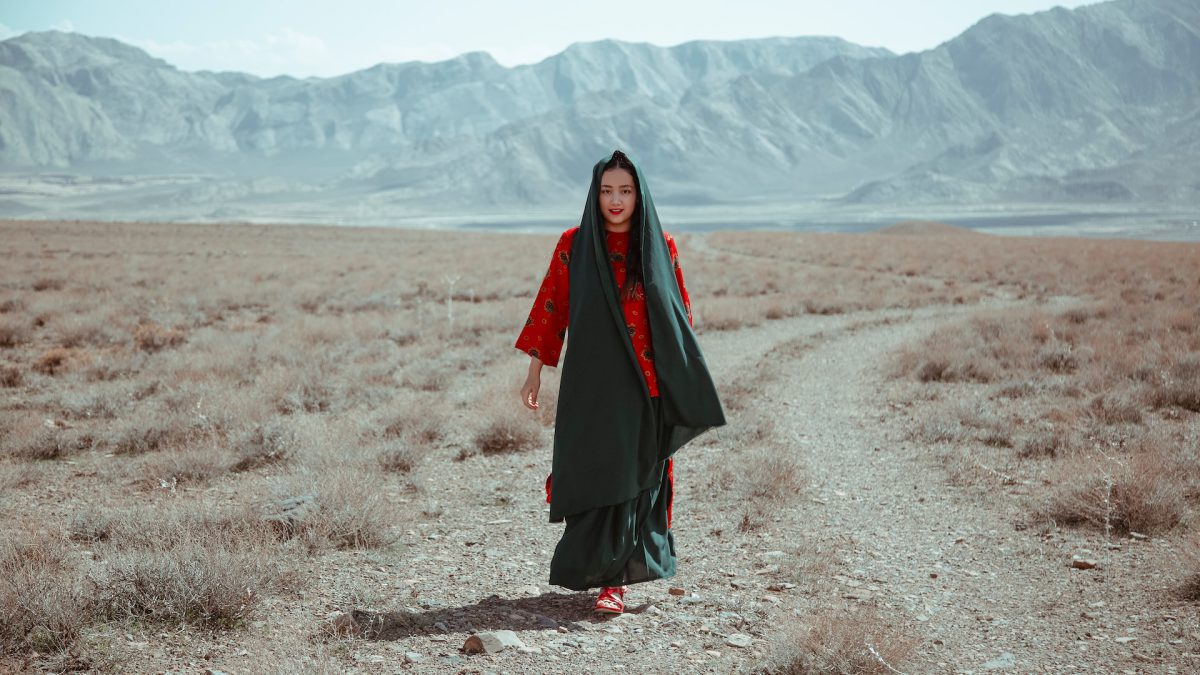
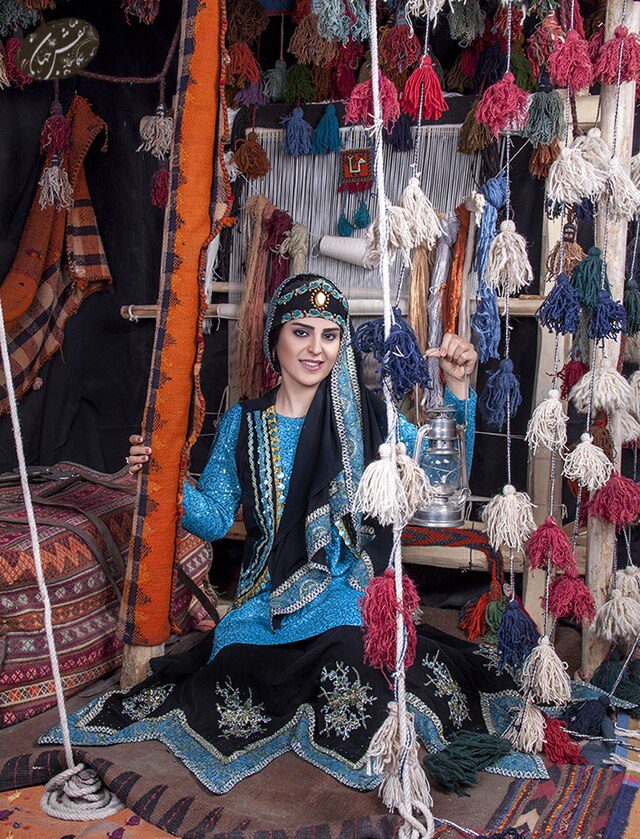
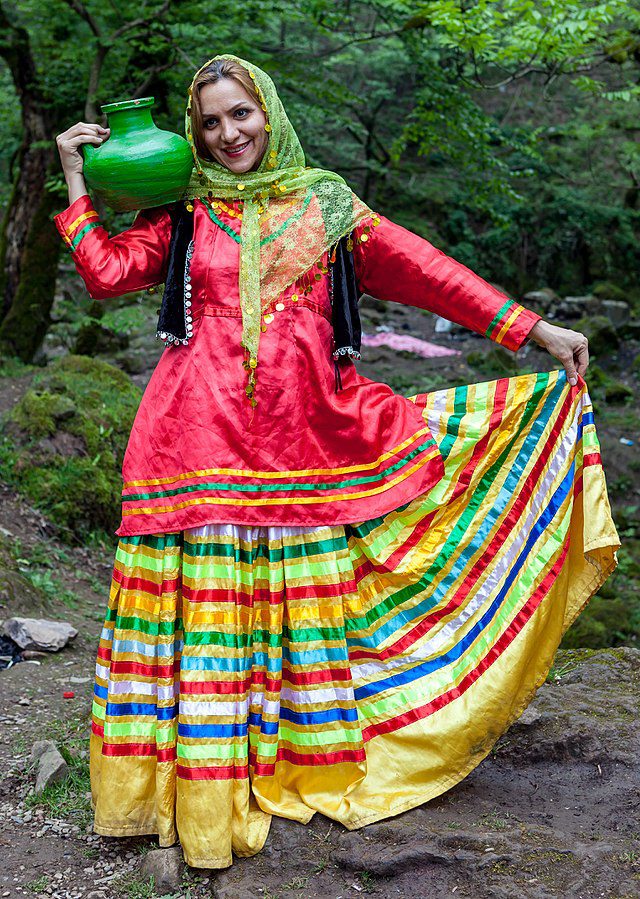
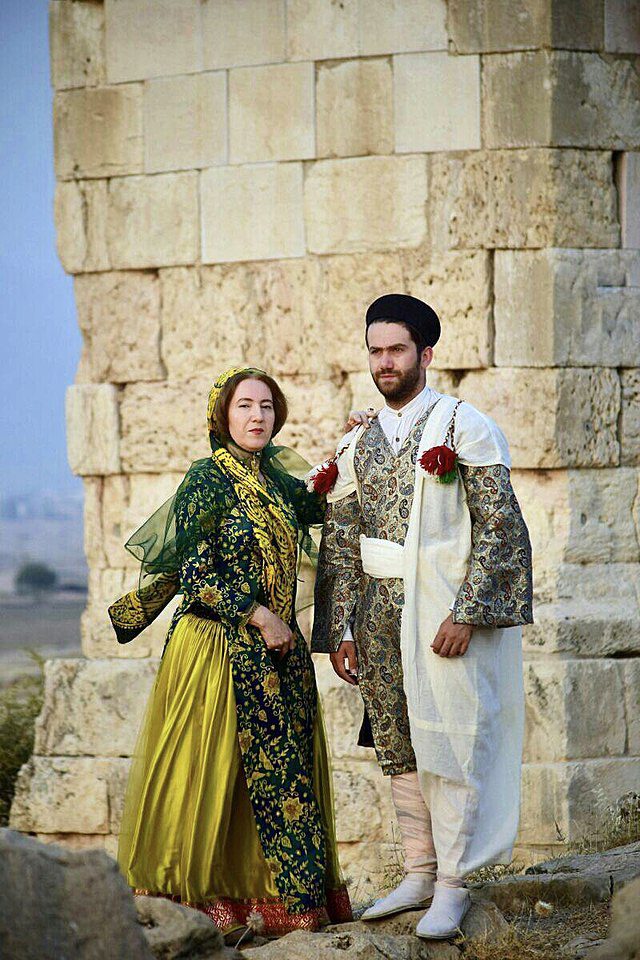
Thank you for this great post! It has been extremely helpful. I hope that you will carry on sharing your wisdom with us.
Very nice style and wonderful written content , nothing else we want : D.